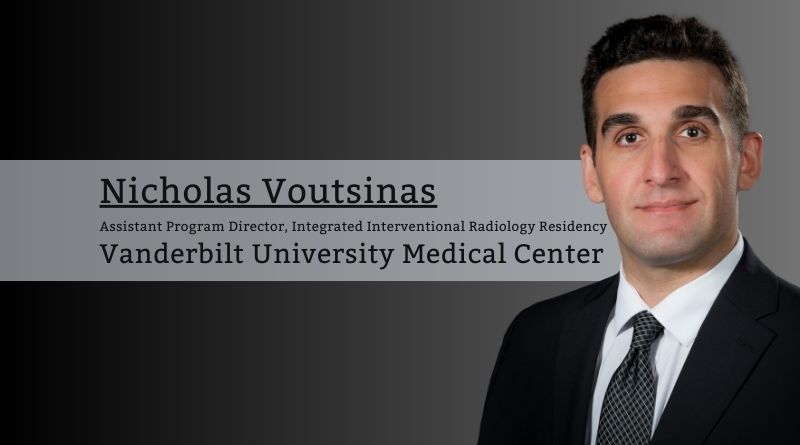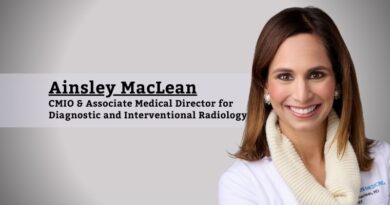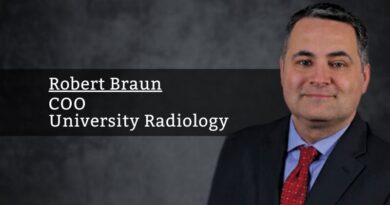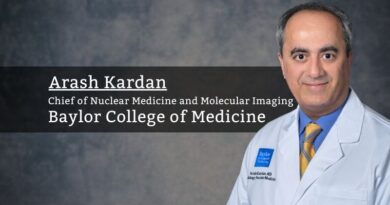Technology and Education: How the Current Utilization of IVUS Illustrates Opportunities to Maximize Physician Education
By Nicholas Voutsinas, MD, RPVI, Assistant Program Director, Integrated Interventional Radiology Residency, Vanderbilt University Medical Center
It was not long ago that the COVID-19 pandemic-related shutdowns in China led to a worldwide iodinated contrast shortage. Hospitals, health systems, government organizations, and radiology societies developed policies and initiatives to ration the available contrastand reduce overall consumption. Alternative tests and procedures were offered; however, many life-saving minimally invasive procedures performed by interventional cardiologists, vascular surgeons, and interventional radiologists still required iodinated contrast. Except, what if they didn’t?
Intravascular ultrasound has been around for many years, but has recently started to gain more prominence in minimally invasive image-guided interventions. Traditionally, ultrasound is thought of as an external beam that penetrates through the soft tissues, with a reflection of the sound waves allowing physicians to determine different structures and clinical conditions. Using the same technology, an intravascular ultrasound probe is placed within the blood vessels to evaluate various vascular conditions and assess surrounding structures. Previous research has shown a clear benefit of using intravascular ultrasound in the coronary space for characterizing plaque, assessing potential dissections, and ensuring optimal stent placement. Intravascular ultrasound is also being increasingly utilized for peripheral interventions in both the arterial and venous spaces. Similar to coronary utilization, peripheral arterial disease patients benefit from being able to visualize pathologies and ensure optimal treatment modality and resolutions from said treatment. In the venous space, a recent study in the Journal of Vascular and Interventional Radiology, showed over 70% utilization by operators placing venous stents to demonstrate optimal wall apposition and placement. Studies have previously demonstrated the value of intravascular ultrasound in assessing treatment response to procedures designed to remove thrombus from the venous system. During endovascular aortic repair, interventional physicians are able to use intravascular ultrasound to distinguish the true aortic lumen from the false one in order to prevent complications from malpositioned grafts.
For intravascular ultrasound and other technologies, more education can only help grow the practice of medicine and improve patient outcomes.
As it is most commonly being used, intravascular ultrasound is used as an adjunctive tool to assist procedural physicians during their procedure in combination with contrast injections with fluoroscopy. While there are some case reports in the literature detailing examples of procedures being performed solely with intravascular ultrasound, these instances are far from commonplace for most providers. There are likely multiple reasons for this: operator discomfort with not using fluoroscopy and iodinated contrast, established physicians being reluctant to change their practice so wildly, clinical scenarios where sole use of intravascular ultrasound would not be appropriate, and lack of appropriate education on how to interpret the imaging. Most of those reasons are likely unchangeable; however, education about using the device and understanding the images it provides is the best way to increase utilization of this growing technology.
Under the current educational environment, most education for intravascular ultrasound is either provided by attending physicians who have adopted the technology to their trainees and partners, or by the device manufacturing companies who provide seminars, workshops, and online resources to bridge the knowledge gap with potential novice users; however, there are inherent limitations to both of these models. Training programs in these highly subspecialized fields have a wide spectrum of disease states and interventions to cover in a relatively short time, and spending significant time focussing on one technology, which is not mandated by any of the societies that regulate these residencies or fellowships, would likely detract from perfecting the more common tasks and situations these physicians will encounter throughout their lifetimes. Device manufacturers have a large amount of resources to educate physicians on proper use of their product, but these come with obvious biases.
At the core of this dilemma is how does the medical education system functionally address the lifelong learning aspect of being physicians as new technologies arise and are adopted optimally for the provider and the patient. This is not a new challenge for medicine, but one that will become increasingly more relevant as the years progress when artificial intelligence (AI) becomes more integrated into the healthcare system, and all the opportunity for growth and potential for harm that this will bring. When new technologies are developed and adopted by practicing physicians, physicians attend workshops, have supervised cases by experienced operators, receive support from company representatives, and then go out and practice with little verification of being able to use their product effectively. Patients need to trust that they are not being used as test subjects for novel technologies, of which potential complications are not fully known.
It is the responsibility of the medical community to come up with rigorous ways to train not just the next generation of physicians, but also those out in practice in the community. Most physicians do not practice in an academic setting are not necessarily being exposed to new technologies in the best ways to serve their patients. Academic centers, industry, medical societies, and thought leaders in various medical fields provide a multitude of materials to educate their colleagues, employees, and trainees, and this focus must not diminish as the medical field advances into the future. For intravascular ultrasound and other technologies, more education can only help grow the practice of medicine and improve patient outcomes.



